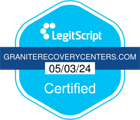
By introducing people with substance use disorder to tools, programs and resources that will help them go through detox, resolve the issues that brought them to addiction in the first place and choose healthy coping mechanisms going forward, well-meaning individuals and organizations can help them get their lives back. This is what we do at Granite Recovery Centers every single day. We help people tackle the demons that brought them to addiction, help them rid the drugs from their systems, and give them the coping mechanisms and tools that they need to move forward.
We are also aware, however, that there are some people who for a variety of reasons are not ready or able to take those first crucial steps towards recovery. These are people who may have sought out addiction help before. They may have relapsed, or maybe they thought about reaching out for help, but couldn’t take that final step.
The average, well-meaning person, however, may find themselves at an emotional and philosophical crossroads when they encounter someone with addiction. On the one hand, they want them to move forward and heal, but on the other, they don’t want to be seen as approving of people making poor decisions when it comes to their drug use. They ardently believe that the only way to help a person with addiction is to get them off drugs immediately, and they don’t believe that there is or should be a middle ground. They end up feeling disappointment at best, or scorn and rage at worst, towards what society has deemed “unrepentant addicts.”
This type of belief system can help make someone’s addiction worse, and it often does. People with substance use disorder often engage in harmful or illegal activity in order to obtain their drugs because many of them truly believe they don’t have any other choice and believe it is necessary for their survival. This controversy has left people suffering with addiction and society at a standoff.
There used to be no help for people who find themselves in this situation. Today there is help. The process is called harm reduction.
What Is Harm Reduction?
The concept of harm reduction revolves around breaking down the harsh policies, stigmas, and belief systems that surround drug addiction. By doing so, existing users who are not yet ready or able to make the transition from user to non-user can exist in a space that’s safe for them and for everyone around them.
The whole idea behind harm reduction is to take away many of those negative associations and stigmas that are usually assigned to people with substance use disorder by creating programs that work with them and not against them. For instance, many frequently use dirty paraphernalia or engage in unsafe behaviors as they use drugs. This, in turn, often leads to the spread of contagious diseases in a community, affecting both active users and non-alcoholics alike, potentially creating a public health crisis. This behavior frequently leads to negative fallout not only in the life of the person struggling with an addiction, but also in the lives of people in the greater community at large as well. By providing access to clean needles, they no longer have the need to share their stock with others who are also actively using, lowering the likelihood of the spread of disease.
This small change could allow people who are still abusing drugs to maintain safe practices and self-care. By doing so, they’re not only less likely to spread things like diseases, but they’ll also avoid unsafe practices that could make a bad situation worse.
Harm reduction programs and methods aren’t meant to be a permanent resolution; they’re instead intended to help provide a bridge, or “in the meantime” solution, that can help keep people actively using and the communities they live in safe. By coming to terms with the fact that there are simply many people who are unable or unwilling to seek treatment at certain times of their lives, we can still help them until they are ready. By offering methods that can help avoid harm or fatalities to themselves or others, harm reduction is helping the broader community at large.
Why Harm Reduction Programs Are Helpful
One of the biggest benefits of harm reduction programs is they help lessen the shame surrounding drug abuse. There is so much stigma that surrounds addiction that people who are struggling with it are often reluctant to come forward. They’re hesitant to get help because they’re afraid to lose their homes, their families or anything else important to them. With harm reduction programs, the addict and the public learn that the best-case scenario is a situation where people remain as healthy as possible, no matter what stage of addiction they’re in.
Without harm reduction, people fall victim to the stigma that surrounds drug use. They’re judged mercilessly, and they feel shame, anger and defensiveness. No one heals in defensive mode, instead gravitating deeper and deeper into the harmful behaviors that threaten their lives. It takes a lot of physical, emotional, and mental strength to go through drug rehabilitation and recovery, and people who aren’t ready will not succeed. With a harm reduction program, they’re literally doing a reduced amount of harm to themselves and the community.
Examples of Types of Harm Reduction Programs
There are several different types of harm reduction programs out there, and they’re usually tailored to work with the specific type of addiction a person is suffering from. Harm reduction techniques could include medicines, therapy, counseling, drug paraphernalia exchanges, and more. Some of the popular ones are listed below.
Injection Sites
One way that heroin users have been helped with harm reduction programs is through the use of injection sites. Injection sites are facilities that work to help prevent overdoses in people who are addicted to opiates. These sites provide medical supervision of people who are addicted to heroin and other opioids so that they don’t spread diseases to others through practices like sharing dirty needles or taking drugs with other addicts and unsanitary conditions.
These sites also provide educational information to addicts that help them with things like counseling, treatment referrals, and how to inject safely. Contrary to popular belief, these are not centers that injection drug addicts or supply drugs. While these types of sites are already popular in Europe, Canada and Australia, there may be some coming soon to American cities like Philadelphia, San Francisco and Seattle.
Needle Exchange Programs
Another harm reduction program that is extremely helpful to existing drug addicts is a needle exchange program. Also referred to as SSP programs, or syringe services programs, these community-based programs provide addicts and local communities with clean and free syringes and needles. They also provide an opportunity for addicts to drop off used needles so that those needles can be disposed of properly. This type of program helps reduce the spread of blood-borne infections that are spread through IV use.
MAT (Medication-Assisted Treatments)
Another type of program that is extremely helpful for addicts is an opioid treatment program. With these programs, prescription medications are dispensed from a specific facility, and that facility also provides information about rehabilitation methods, counseling and other solutions that addicts may use as they make the journey to the day when they’re ready to truly battle their addictions.
These treatments are also called Medication-Assisted Treatments (MAT), and they’re one of the treatments that we offer at Granite Recovery Centers. While they may seem controversial on the outside, these types of programs have actually been shown to help increase survival rates among addicts, lower the frequency of opioid use and help increase rehab retention rates. Some examples of medications used in MAT include methadone, buprenorphine and naltrexone.
HAMS
HAMS, or Harm Reduction Abstinence and Moderation Support, is a free peer-support group that helps people struggling with alcohol abuse. The goal is not to judge people for where they are, but instead to meet them where they are. In this program, people get to choose their own goals; they can decide whether they want to completely abstain from alcohol or simply reduce the amount they drink to a more tolerable and healthy level. This program uses 17 elements to help clients map out and create their own goals. The elements are allowed to be completed in any order, and people have the freedom to stop when they need to stop.
Another harm reduction program for alcohol users involves using a medication called naltrexone. This type of medication helps greatly reduce someone’s drinking because it reduces the pleasurable effects that people get from drinking. It actually makes alcohol taste unpleasant.
This type of medication has been extremely successful when used with homeless people struggling with alcoholism. They’ve been able to greatly reduce the amount of alcohol they consume and get to a state of mind when they can start to rebuild.
Designated Driver Programs
Some communities offer designated driver programs. These programs are paid for by nonprofit organizations, and they are designed to help people who are intoxicated because of alcohol or drugs get home safely. They will ensure that both you and your car are delivered safely to your home.
With some of these programs, two people come to where you are. One person drives your car home, while the other person drives you home. In another version of the program, one person arrives with a foldable scooter. They drive you home in your car, and they make sure that you’re safe. Once you’re safely deposited in your home, they leave on their scooter.
Stimulant Abuse Programs
People who are suffering from stimulant abuse also have several harm reduction programs available to them. Some of these include providing clean needles and information about how to access services like therapies and other types of restorative treatments. There is even help for people who are experiencing delusions, anxiety, hallucinations or any of the other side effects that come about as a result of frequent stimulant use. These people are sometimes given antipsychotic medication or benzodiazepines in order to help them calm down.
The Effectiveness of Harm Reduction Treatments
Studies on harm reduction programs have shown that they are extremely helpful, effective and productive. The National Institute on Drug Abuse reports that MATs like naloxone or buprenorphine have actually helped people who are addicted to opioids.
Over half of the people in the study were abstinent 18 months after being on the MAT treatment. After 3 1/2 years, the abstinence rate rose to 61%, and fewer than 10% were diagnosed as having opioid use disorder. Other studies have found that homeless people who had been given extended-release naltrexone for alcohol reduction were able to reduce alcohol consumption.
How Granite Recovery Centers Helps With Harm Reduction
At Granite Recovery Centers, we tailor our treatment programs towards the individual. Granite Recovery Centers provides medical detoxification for people who do not need immediate medical intervention, are not a danger to themselves, and are capable of self-evacuation in the event of an emergency.
We understand how important harm reduction programs can be when it comes to helping addicts through their different stages of addiction. We’re proponents of harm reduction programs, and we understand their importance in the drug addiction recovery process. We offer MAT programs so that people can be as comfortable as possible as they go through treatment.
Whether people are part of our inpatient or outpatient programs, we work with them to make sure they have access to the harm reduction programs that they need to successfully overcome all facets of drug recovery and rehabilitation. If you or a loved one is suffering with a substance abuse problem and would like to learn more about the programs we offer, please give us a call today.

















